Class Merostomata Family Limulidae | Genus Tachypleus Rank Species | |
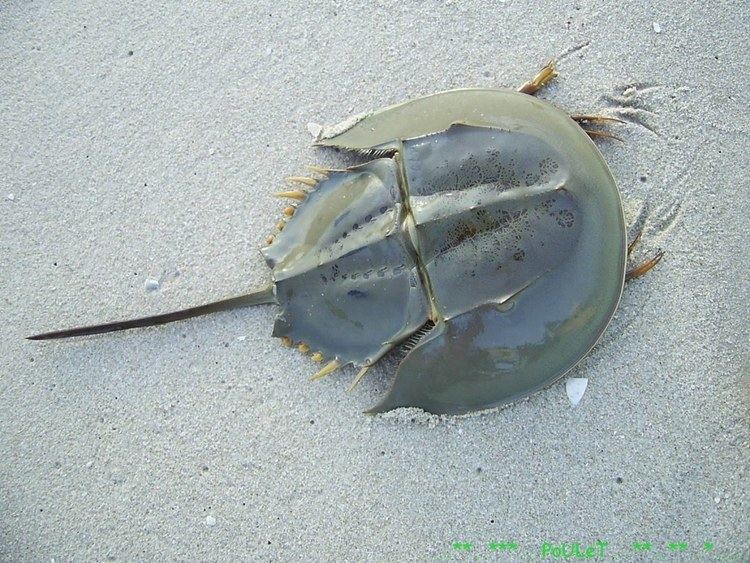 | ||
Similar Tachypleus, Mangrove horseshoe crab, Carcinoscorpius, Tachypleus tridentatus, Atlantic horseshoe crab | ||
Horseshoe crab tachypleus gigas egg laying at chandipur shore
Tachypleus gigas, one of the four extant species of horseshoe crab, is found in shallow water in Southeast Asia at depths to 40 m (130 ft). It grows up to 39 cm (15 in) long and 17.5 cm (6.9 in) wide, and is covered by a sturdy carapace, with a long caudal spine (tail).
Contents
- Horseshoe crab tachypleus gigas egg laying at chandipur shore
- Indian horseshoe crab tachypleus gigas in balasore coast
- Description
- Lifecycle
- Distribution
- Ecology and conservation
- Taxonomy
- References
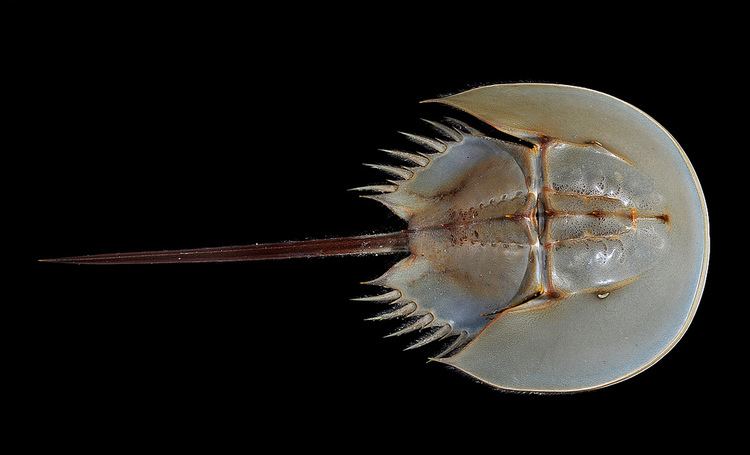
Indian horseshoe crab tachypleus gigas in balasore coast
Description

T. gigas has a "sage green" chitinous exoskeleton. In a sample of five individuals, Lazarus et al. recorded maximum and minimum total lengths of 39 cm (15 in) and 27 cm (11 in), respectively. The prosoma is the widest part of the animal, at 14–17.5 cm (5.5–6.9 in) and 8.2–11.5 cm (3.2–4.5 in) long, while the opisthosoma is 9–11.5 cm (3.5–4.5 in) wide and 6–7.5 cm (2.4–3.0 in) long. The caudal spine (the long, pointed part of the tail) is 13.5–19 cm (5.3–7.5 in) long, bears a crest dorsally, and is concave ventrally. The anterior part of the tail is sharply serrated. Males are smaller than females, have a paler and rougher carapace, and act as hosts to a greater number of epibionts.
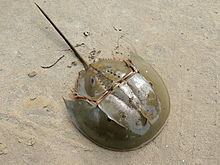
The carapace which shields the prosoma also bears two pairs of eyes – a pair of simple eyes at the front, and a pair of compound eyes positioned laterally. In common with other horseshoe crabs, T. gigas also has ventral eyes near the mouthparts, and photoreceptors in the caudal spine.
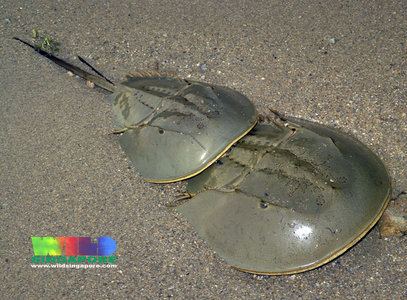
On its underside, T. gigas has seven pairs of legs, five of which bear small claws, and five pairs of book gills, which are used for gas exchange.
Lifecycle
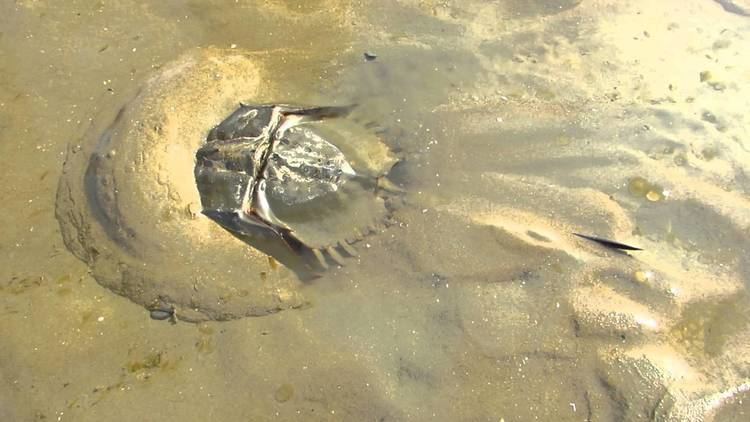
The lifecycle of T. gigas is relatively long and involves a large number of instars. The eggs are about 3.7 mm (0.15 in) in diameter. The freshly hatched larvae, known as trilobite larvae, have no tail, and are 8 mm (0.31 in) long. Males are thought to pass through 12 moults before reaching sexual maturity, while females pass through 13 moults.
Distribution
T. gigas has the broadest latitudinal distribution of the three Asian horseshoe crab species, ranging across the western Pacific Ocean from Japan to the Philippines, extending into the Indian Ocean only on the west coast of Sumatra.
Ecology and conservation
T. gigas inhabits sandy and muddy shores at depths to 40 m (130 ft), and is the only horseshoe crab to have been observed swimming at the surface of the ocean. Its diet is chiefly composed of molluscs, detritus, and polychaetes, which it seeks on the ocean floor. House crows have been observed to turn T. gigas over and eat the soft underside, while gulls only attack individuals that are already stranded upside-down.
Since horseshoe crabs do not moult after they have reached sexual maturity, they are often colonised by epibionts. The dominant diatoms are species of the genera Navicula, Nitzschia, and Skeletonema. Among the larger organisms, the sea anemone Metridium, the bryozoan Membranipora, the barnacle Balanus amphitrite, and the bivalves Anomia and Crassostrea are the most frequent colonists of T. gigas. Rarer epibionts include green algae, flatworms, tunicates, isopods, amphipods, gastropods, mussels, pelecypods, annelids, and polychaetes.
T. gigas is listed as Data Deficient on the IUCN Red List.
Taxonomy
Tachypleus gigas was first described by Otto Friedrich Müller in 1785. It was originally placed in the genus Limulus, but was transferred to the genus Tachypleus by Reginald Innes Pocock in 1902.
T. gigas is estimated to have diverged from the other Asian species of horseshoe crab 52.5 million years ago. While it is clear that the American horseshoe crab Limulus polyphemus is distinct from the remaining extant species of horseshoe crab, relationships within the Asian horseshoe crabs remains uncertain. T. gigas has a chromosome number of 2n = 28, compared to 26 in T. tridentatus, 32 in Carcinoscorpius, and 52 in Limulus.
Common names for the species include Indo-Pacific horseshoe crab, Indonesian horseshoe crab, Indian horseshoe crab and Chinese horseshoe crab.
